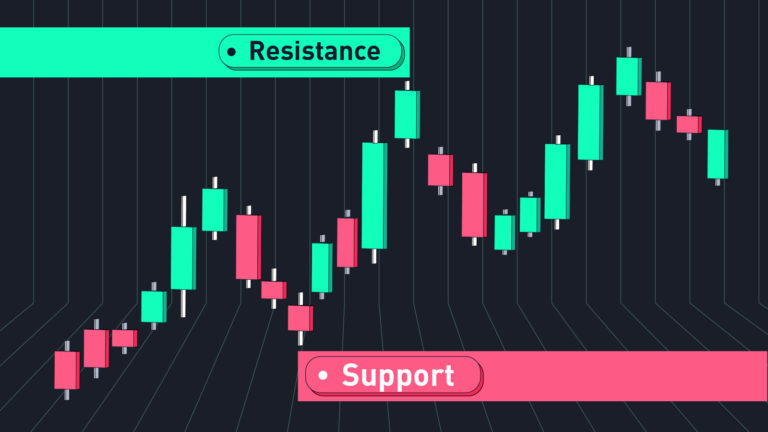
The Stochastic Oscillator is a powerful technical indicator that helps traders identify potential buy and sell signals based on the momentum of an asset’s price movement. This article will explain how to use the Stochastic Oscillator effectively in trading, including key strategies, entry and exit points, and the best practices to maximize its usefulness in the market.
1. Understanding the Components of the Stochastic Oscillator
The Stochastic Oscillator is made up of two lines: the %K line and the %D line. Understanding these components is crucial for using the oscillator effectively.
- %K Line: This is the main line of the Stochastic Oscillator and represents the current closing price relative to the range of prices over a specified time period. The %K line is calculated as follows:
- %K = 100 * (Current Close – Lowest Low) / (Highest High – Lowest Low)
- %D Line: This is a smoothed version of the %K line, typically calculated using a 3-period moving average. The %D line provides a clearer signal of price momentum.
The two lines are plotted on a scale from 0 to 100, with values above 80 considered overbought and values below 20 considered oversold. This helps traders identify potential reversal points in the market.
2. Using the Stochastic Oscillator for Buy and Sell Signals
The Stochastic Oscillator is commonly used to generate buy and sell signals through the following methods:
- Crossover Signal: A crossover occurs when the %K line crosses the %D line. There are two types of crossovers:
- Bullish Crossover: When the %K line crosses above the %D line, it signals a potential buying opportunity, suggesting that the momentum is shifting to the upside.
- Bearish Crossover: When the %K line crosses below the %D line, it signals a potential selling opportunity, indicating a shift in momentum to the downside.
- Overbought and Oversold Conditions: The Stochastic Oscillator can also indicate whether an asset is overbought or oversold.
- Overbought: When the Stochastic Oscillator is above 80, it suggests that the asset may be overbought, and a price reversal could be imminent. Traders might consider selling or waiting for a reversal signal.
- Oversold: When the Stochastic Oscillator is below 20, it suggests that the asset may be oversold, and a price increase may be on the horizon. Traders might consider buying or waiting for a bullish signal.
3. Best Practices for Using the Stochastic Oscillator
To use the Stochastic Oscillator effectively, traders should follow some best practices to improve accuracy and reduce the chances of false signals.
- Combine with Other Indicators: While the Stochastic Oscillator is useful, it’s important to combine it with other indicators, such as Moving Averages, Relative Strength Index (RSI), or MACD, to confirm signals and avoid false positives. This can increase the reliability of your trading decisions.
- Use in Range-Bound Markets: The Stochastic Oscillator works best in range-bound markets, where the price is moving sideways. In trending markets, the oscillator may remain in overbought or oversold territory for an extended period, making it less reliable for signaling reversals.
- Avoid Chasing Price Movements: If the market is trending strongly, it is better to avoid relying solely on the Stochastic Oscillator for signals. It’s often better to wait for pullbacks in the trend or combine the oscillator with trend-following indicators to avoid chasing after rapidly-moving price action.
4. Timing Market Entries and Exits with the Stochastic Oscillator
Traders use the Stochastic Oscillator to time their market entries and exits, helping them capture price moves effectively. Here’s how you can use the oscillator to make better decisions:
- Entering a Buy Position: Look for a bullish crossover (when the %K line crosses above the %D line) while the oscillator is below 20 (oversold). This indicates a potential reversal to the upside. Enter the buy position when the crossover happens and the oscillator starts moving upward.
- Entering a Sell Position: Look for a bearish crossover (when the %K line crosses below the %D line) while the oscillator is above 80 (overbought). This suggests a possible reversal to the downside. Enter the sell position when the crossover occurs and the oscillator starts moving downward.
- Exiting Trades: If you are in a buy position and the oscillator reaches overbought territory (above 80), it might be time to exit the position or tighten your stop loss. Similarly, if you are in a sell position and the oscillator enters oversold territory (below 20), it may be time to exit.
5. Limitations of the Stochastic Oscillator
While the Stochastic Oscillator is a valuable tool, it is important to understand its limitations:
- False Signals in Strong Trends: The Stochastic Oscillator can generate false signals in strong trending markets. In such cases, the oscillator may stay in overbought or oversold zones for extended periods, giving misleading signals. In trending markets, it is often better to use trend-following indicators.
- Lagging Indicator: The oscillator’s signals may sometimes lag behind price action, as they are based on past price data. This can result in missed opportunities or delayed entry and exit points.
6. Conclusion
The Stochastic Oscillator is a versatile tool for traders to identify overbought and oversold conditions, as well as potential trend reversals. By understanding how to use the oscillator’s components, such as crossovers, and combining it with other technical indicators, traders can improve their chances of making profitable trades. It is essential, however, to be mindful of its limitations and use it in conjunction with other analysis methods to make informed decisions.